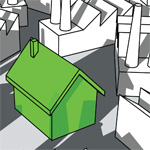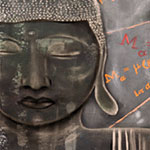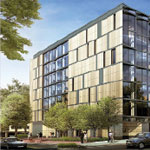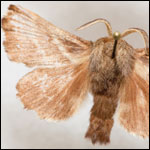The Body RoboticForm, function, and the future are seen through the eyes and handiwork of three GW roboticists.One of them aspires to be on the battlefield. Another, in the home as a domestic aide. Others aim to perform surgeries and to chauffeur the tired, the busy, and the infirm. Read more > |
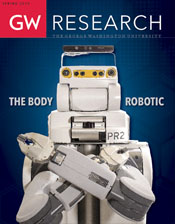 |
Research News
Study: HIV Infection Rate Higher Among Gay Black Men
Human, Chimp Brain Wiring Develops Differently
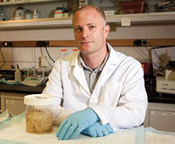
A new study led by GW anthropologist Chet Sherwood found key differences in brain development between humans and chimps.
Inspired by Feathers, New Wing Design Takes Flight
Stellar Find: X-ray emissions may offer clues about star's composition
University's Research Ranking Climbs into Top 100
Report: Future of Real Estate is in Strides, Not Rides
Postlude
Greening a Ubiquitous Gray
For thousands of years, producing cement has also meant producing harmful carbon dioxide. Stuart Licht believes it's time to let in the sun.
It's an essential part of the glue that builds cities and much of the space between them. But the process of creating cement, a chief ingredient in concrete, generates nearly as much of the greenhouse gas carbon dioxide as it does cement. Read more >
Adding it Up
As the nation's future becomes increasingly tied to schools rooted in science and engineering, one question remains: What makes these schools work?
President Barack Obama has called it the "Sputnik moment" of our time. ¶ The critical science and math skills of U.S. students lag behind their peers in other countries; the percentage of U.S. undergraduates earning science- and engineering-related degrees is dwarfed by that of countries like Japan and China; and businesses in recent years have reported difficulty filling skilled jobs in
fields related to science, technology, engineering, and math. Read more >
Redrawing the Poverty Line
For those who help the poor, a bit of math is exposing a kaleidoscopic view of poverty.
On the wall of economist James Foster's office hangs a painting of blossoming roses, connected by a stem. Woven into the dark background is a repeating string of letters and symbols—a piece of a mathematical formula. Read more >
A Shifting Landscape
With a new building taking root and a growing roster of researchers and grants, the dean of GW's School of Public Health outlines a vision for the near future.
Beyond the window of her office on D.C.'s frenetic K Street, Lynn Goldman can see the slow rise of the future. ¶ Inching up from a construction pit a few blocks away is the new, $75-million home of the School of Public Health and Health Services, which she leads as dean. Read more >
Out on a Limb
As one species of caterpillar tries to beat the heat, what will the changes mean for its forest ecosystem?
You didn't have to be a scientist to see the effects of climate change last year. ¶ The District of Columbia's famous cherry trees bloomed a month ahead of schedule. Mammals broke their hibernation patterns early. And in John Lill's backyard, caterpillars were spotted weeks before they were expected. Read more >

